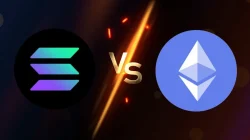The cryptocurrency market is highly volatile, fast-paced, and driven largely by speculation. For beginners looking to trade or invest in cryptocurrencies, understanding technical analysis (TA) can provide a major edge. While fundamental analysis focuses on the value of a crypto project or token based on its technology, use cases, and development team, technical analysis relies on reading price charts, identifying patterns, and making educated guesses based on market psychology and historical trends.
This guide is crafted specifically for beginners who are eager to learn how to analyze crypto markets technically. It breaks down the basic concepts, tools, and indicators, and guides you through the mindset and techniques used by professional crypto traders.
What Is Technical Analysis?
Technical analysis is a method of predicting price movement based on historical data, primarily price and volume. It assumes that all relevant information is already reflected in the price and that price movements tend to follow patterns that repeat over time.
Unlike fundamental analysis, technical analysis doesn’t consider factors like project development, partnerships, or regulation. Instead, it looks at how people behave in markets: buying when they’re greedy, selling when they’re fearful, and forming patterns due to collective psychology.
Why Use Technical Analysis for Crypto?
The cryptocurrency market operates 24/7, is highly speculative, and often moves rapidly due to news, hype, or whales (large investors) entering or exiting positions. These characteristics make technical analysis especially useful because:
- Speed: TA gives real-time signals, which is crucial in a fast-moving market.
- Pattern Recognition: Crypto often forms chart patterns that can be used for predictions.
- No Need for Deep Tech Knowledge: TA doesn’t require an understanding of blockchain technology.
- Objective Rules: TA can be systematized using rules and indicators.
The Building Blocks of Technical Analysis
Before diving into the tools and techniques, you need to understand the foundational concepts of technical analysis. These are the backbone of any strategy.
1. Price Charts
A chart is the first thing any technical analyst looks at. The most common type of chart in crypto trading is the candlestick chart. Each “candle” represents price movement over a given time frame (1 minute, 1 hour, 1 day, etc.).
Each candlestick shows:
- Open: Price when the candle starts
- Close: Price when the candle ends
- High: The highest price during that time
- Low: The lowest price during that time
A green candle (or white, depending on the platform) indicates that the closing price was higher than the opening price. A red candle (or black) indicates a drop in price.
2. Trends
Trends are the direction in which a market moves. There are three main types of trends:
- Uptrend: Higher highs and higher lows
- Downtrend: Lower highs and lower lows
- Sideways/Consolidation: Little or no movement in either direction
Identifying the trend is the first step in any technical analysis, as most strategies are either trend-following or trend-reversal.
3. Support and Resistance
- Support is a level where the price tends to find a floor. It’s the price where buying interest is strong enough to prevent further decline.
- Resistance is a ceiling where the price often faces selling pressure.
These levels are psychological and technical zones where traders expect reversals or bounces.
4. Volume
Volume indicates how much of a crypto asset has been traded during a specific time. High volume can confirm the strength of a price movement, while low volume may suggest weakness or indecision.
Key Tools and Indicators for Crypto Technical Analysis
Once you grasp the basics, the next step is learning to use the actual tools and indicators available on charting platforms like TradingView or CoinMarketCap.
1. Moving Averages (MA)
Moving Averages smooth out price data to identify the direction of the trend.
- Simple Moving Average (SMA): Average of past closing prices over a given period
- Exponential Moving Average (EMA): Gives more weight to recent prices
Common periods: 20-day, 50-day, and 200-day MAs.
When a short-term MA crosses above a long-term MA (called a golden cross), it’s a bullish signal. When it crosses below (death cross), it’s bearish.
2. Relative Strength Index (RSI)
RSI measures the magnitude of recent price changes to evaluate overbought or oversold conditions. It ranges from 0 to 100:
- Above 70: Overbought (possible sell signal)
- Below 30: Oversold (possible buy signal)
RSI can also be used to identify divergence, which can signal a potential reversal.
3. MACD (Moving Average Convergence Divergence)
MACD is a momentum indicator that shows the relationship between two moving averages.
- MACD Line: Difference between the 12-day and 26-day EMA
- Signal Line: 9-day EMA of the MACD Line
When the MACD crosses above the Signal Line, it’s bullish; when it crosses below, it’s bearish.
4. Bollinger Bands
Bollinger Bands consist of:
- A simple moving average (usually 20-day)
- Two bands set at standard deviations above and below the MA
When price touches the upper band, it may be overbought; when it touches the lower band, it may be oversold.
5. Fibonacci Retracement
Fibonacci levels are based on the Fibonacci sequence. Traders use these levels (23.6%, 38.2%, 50%, 61.8%, 78.6%) to identify potential reversal zones during a trend retracement.
For example, during a bull run, traders may look to enter on a dip around the 61.8% retracement level.
Popular Crypto Chart Patterns
Chart patterns are formations that appear on charts and signal possible future movements.
1. Head and Shoulders
- Top Head and Shoulders: Reversal pattern in an uptrend
- Inverse Head and Shoulders: Reversal pattern in a downtrend
These patterns show exhaustion of a trend and possible reversal.
2. Double Top and Double Bottom
- Double Top: Bearish reversal pattern after two peaks
- Double Bottom: Bullish reversal pattern after two lows
They usually signal strong support or resistance levels being tested.
3. Triangles
- Ascending Triangle: Bullish continuation
- Descending Triangle: Bearish continuation
- Symmetrical Triangle: Can break in either direction
Triangles show a period of consolidation and often precede a breakout.
4. Flags and Pennants
These are short-term continuation patterns that form after a strong price movement. They usually indicate a pause before the next leg up or down.
Time Frames in Crypto Trading
Choosing the right time frame is critical:
- Scalpers: 1-minute to 15-minute charts
- Day Traders: 30-minute to 4-hour charts
- Swing Traders: Daily or weekly charts
- Long-term Investors: Weekly or monthly charts
Multiple time frame analysis can help provide a broader perspective and avoid false signals.
Candlestick Patterns Every Beginner Should Know
Candlestick patterns can signal trend continuation or reversal.
Bullish Patterns
- Hammer: Found at the bottom of a downtrend, signals potential reversal
- Bullish Engulfing: A small red candle followed by a larger green candle
- Morning Star: Three-candle pattern indicating reversal to upside
Bearish Patterns
- Shooting Star: Found at the top of an uptrend, suggests reversal
- Bearish Engulfing: A small green candle followed by a larger red candle
- Evening Star: Opposite of the Morning Star, indicating a reversal to the downside
Common Mistakes Beginners Make in Technical Analysis
- Relying on One Indicator Alone
Always use multiple indicators to confirm a signal. - Ignoring Volume
A breakout without volume is often a false signal. - Overtrading
Don’t trade every signal. Patience pays off. - No Stop-Loss
Always use a stop-loss to manage risk. - Chasing Trends
Don’t buy after a massive price pump. Wait for confirmation or retracement. - Not Understanding Risk Management
Never invest more than you can afford to lose. Set clear risk/reward ratios.
How to Start Practicing Technical Analysis
1. Use Free Tools
Platforms like TradingView and CoinMarketCap offer free charts and technical indicators.
2. Study Historical Charts
Look at how indicators behaved in the past and match them with real price movements.
3. Join Communities
Crypto Twitter, Reddit (e.g., r/CryptoCurrency), and Discord groups can provide real-time discussions.
4. Paper Trade
Practice trading without using real money. Many platforms offer demo accounts.
5. Keep a Trading Journal
Record your trades, what you saw, what you predicted, and what happened. Over time, you’ll improve by analyzing your own behavior.
Final Tips for Technical Analysis in Crypto
- Always combine TA with basic market awareness: Even though TA doesn’t rely on news, it’s helpful to know when major announcements or events (like Bitcoin halving) are coming up.
- Be adaptable: A strategy that works in a bull market might fail in a bear market.
- Less is more: Stick to a few reliable indicators rather than crowding your chart.
- Backtest your strategy: Before using real money, test your system against historical data.
Mastering technical analysis takes time, patience, and discipline. But once you become proficient, it becomes an indispensable skill in navigating the wild world of crypto trading.







